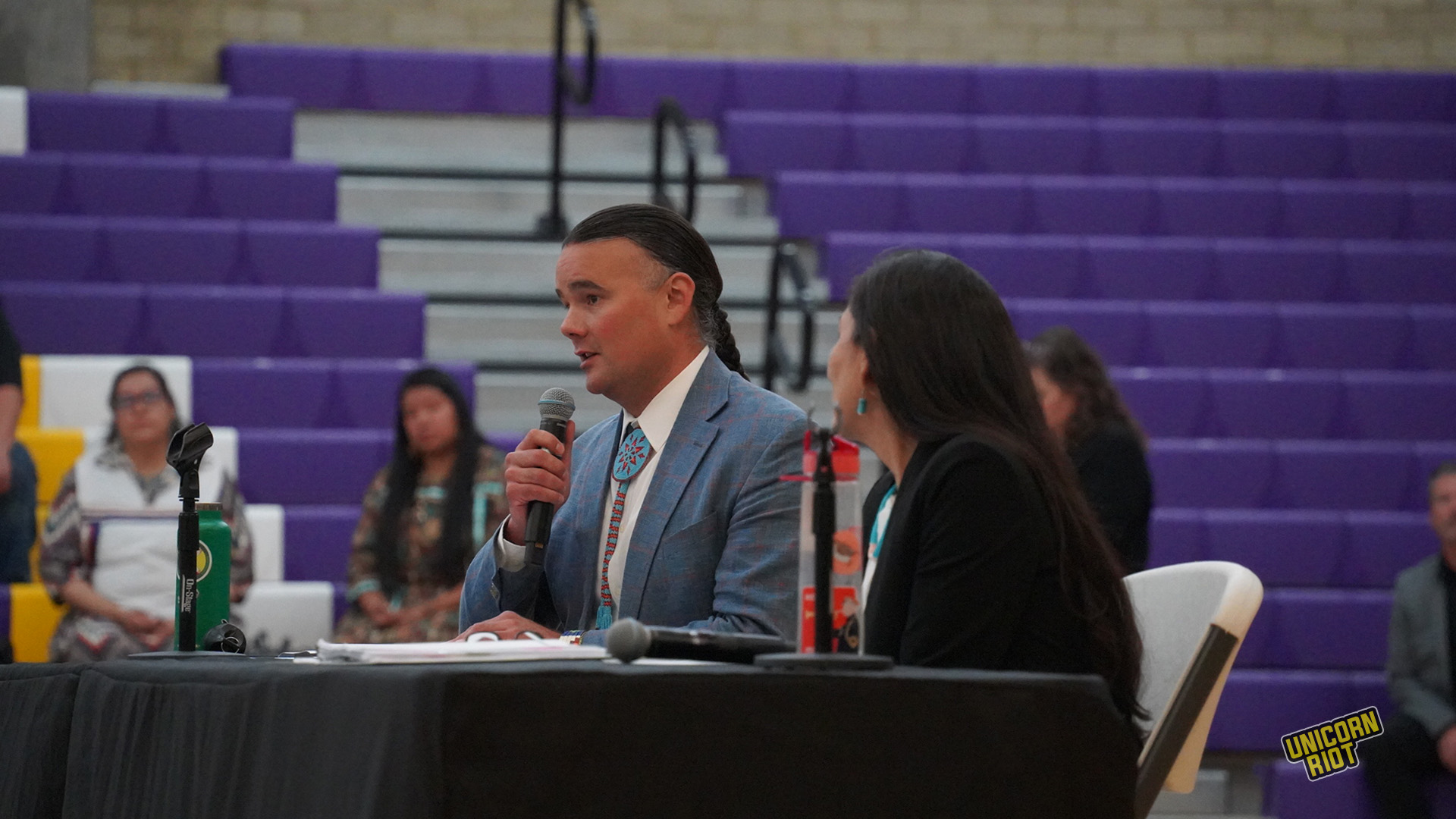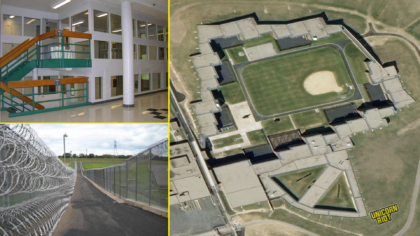US Department of Interior Hosts California Listening Sessions on Federal Indian Boarding Schools
Riverside, CA — In early August, the U.S. Department of Interior hosted more “Road to Healing” listening sessions on federal Indian boarding schools with two stops in California, in both Rohnert Park and Riverside. The stops were the seventh and eighth in a tour across the country since starting in May 2022.
Among those in attendance were San Manuel Band of Mission Indians Chairwoman Lynn Valbuena, Pechanga Band of Indians Chairman Mark Macarro, U.S. Rep. Mark Takano (D-CA-3), and survivors, descendants of Indian boarding school students and other tribal citizens.
The listening sessions are part of the Federal Indian Boarding School Initiative launched by U.S. Secretary of Interior Debra Haaland on June 22, 2021 — just days after the recent discovery of 215 unmarked graves at the Kamloops Indian Residential School in Canada. Previous sessions were hosted in Anadarko, Oklahoma; Pellston, Michigan; Mission, South Dakota; Gila River Indian Community, near Phoenix, Arizona, Many Farms, Arizona on the Navajo Nation; and Tulalip Indian Reservation, near Seattle, Washington; the Mille Lacs Band of Ojibwe in Onamia, Minnesota.
US Dept. of Interior Continues Boarding School Listening Sessions, Visits Minnesota [June 3, 2023]
U.S. Department of Interior Halfway through “Road to Healing” Tour [Feb. 3, 2023]
“Federal Indian boarding school policies have impacted every single Indigenous person I know,” said Secretary of the Interior Deb Haaland while introducing the “Road to Healing” session at the Sherman Indian High School in Riverside, California on Friday, August 4. “Some are survivors, some are descendants, but we all carry this painful legacy in our hearts regardless of who we are.”
The purpose of the sessions are to encourage Indian boarding school survivors and descendants to share their stories to become a part of a permanent oral history preserved by the U.S. Federal Government. Many survivors and descendants spoke throughout the sessions, sharing some positive, but mainly negative memories of Indian boarding schools.
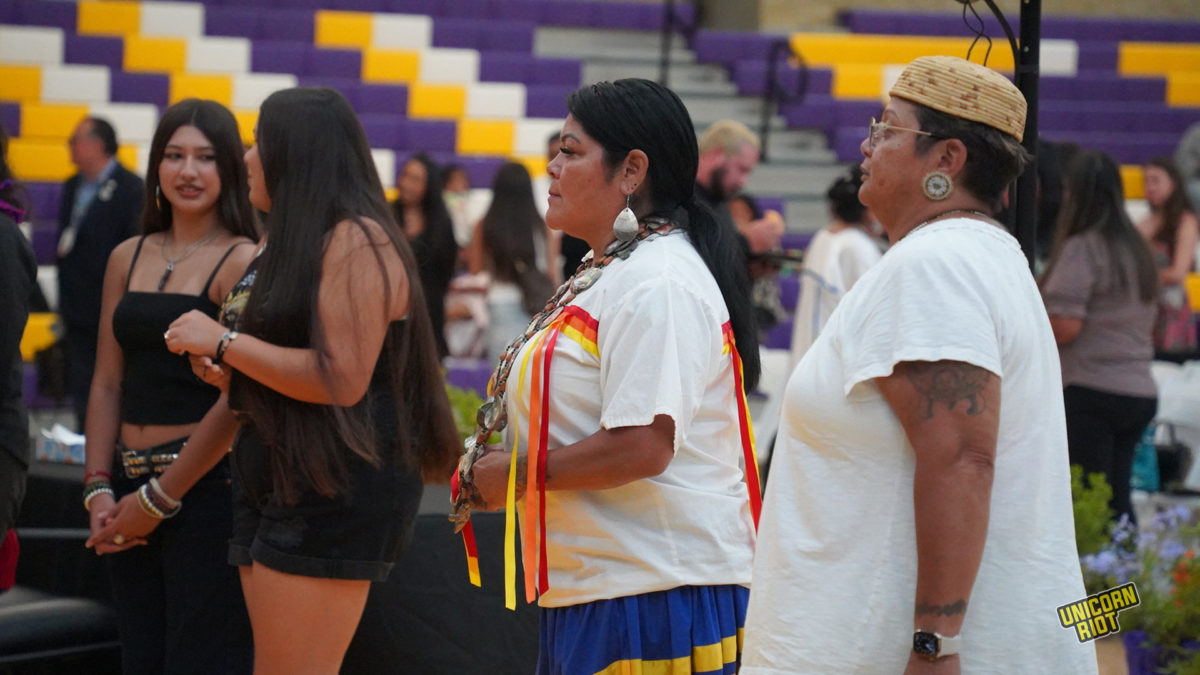
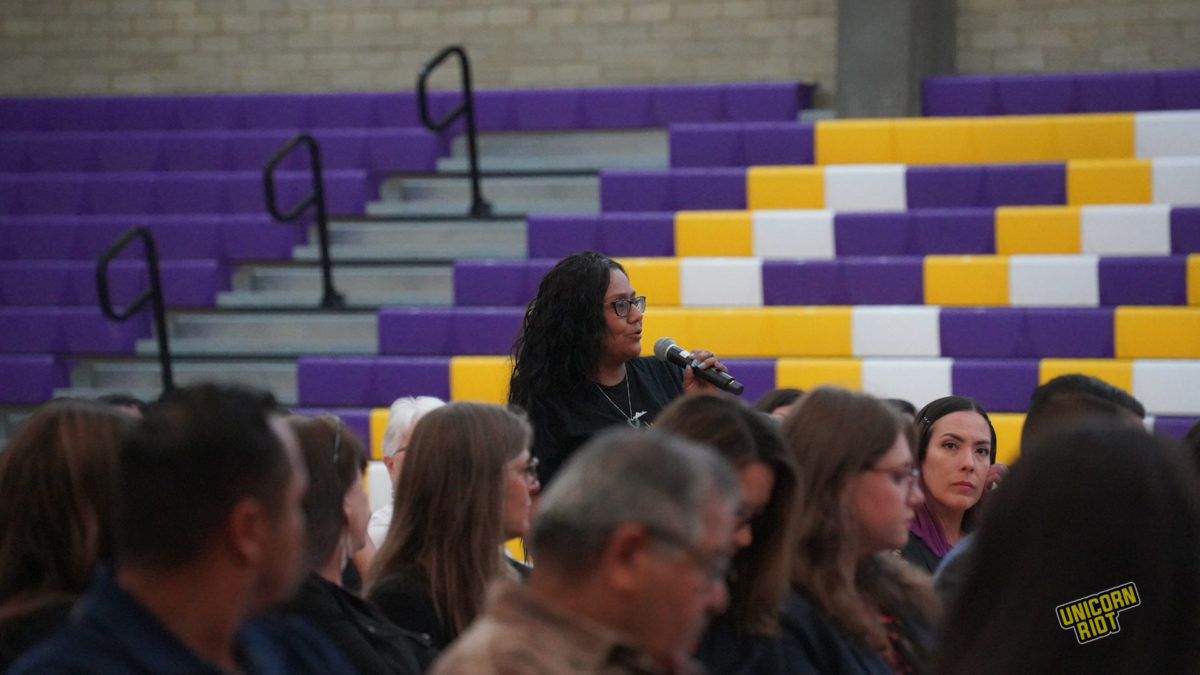
Cynthia Devers, Sherman Indian High School Board President, spoke of intergenerational trauma and shared that her father attended Sherman Indian High School and did not speak of any bad experiences. “The bad stuff came from my mom, who never attended a boarding school,” she said. “But the same thing that happened there, happened here. She was not allowed to speak her language when she went to school. They beat her—badly.”
Devers said her mother was bi-lingual and spoke Luiseño and Spanish. “When she went back to school and answered in Spanish, they beat her again,” she said. Luiseño is one of the Indigenous languages Indigenous to Southern California. There are 6 federally recognized Luiseño tribes in California: La Jolla Band of Luiseño Indians, Pala Band of Luiseño Indians, Pauma Band of Luiseño Indians, Pechanga Band of Luiseño Indians, Rincon Band of Luiseño Indians, and Soboba Band of Luiseño Indians.
A Blackfeet man from Montana, who requested to be identified only by his first name, said that he moved to Los Angeles during the Relocation Era in 1963. A social worker, and military veteran, he spoke of being diagnosed with post-traumatic stress disorder (PTSD). “With men, that is war, but with children, that is genocide,” he said. As a social worker, he spoke of the intergenerational trauma he has experienced working with many American Indian/Native American families in the area. He said families shared of their hair being cut, punished for speaking their language or taking a liking to their Native culture, and made to feel ashamed of their heritage. “That is genocide,” he repeated.
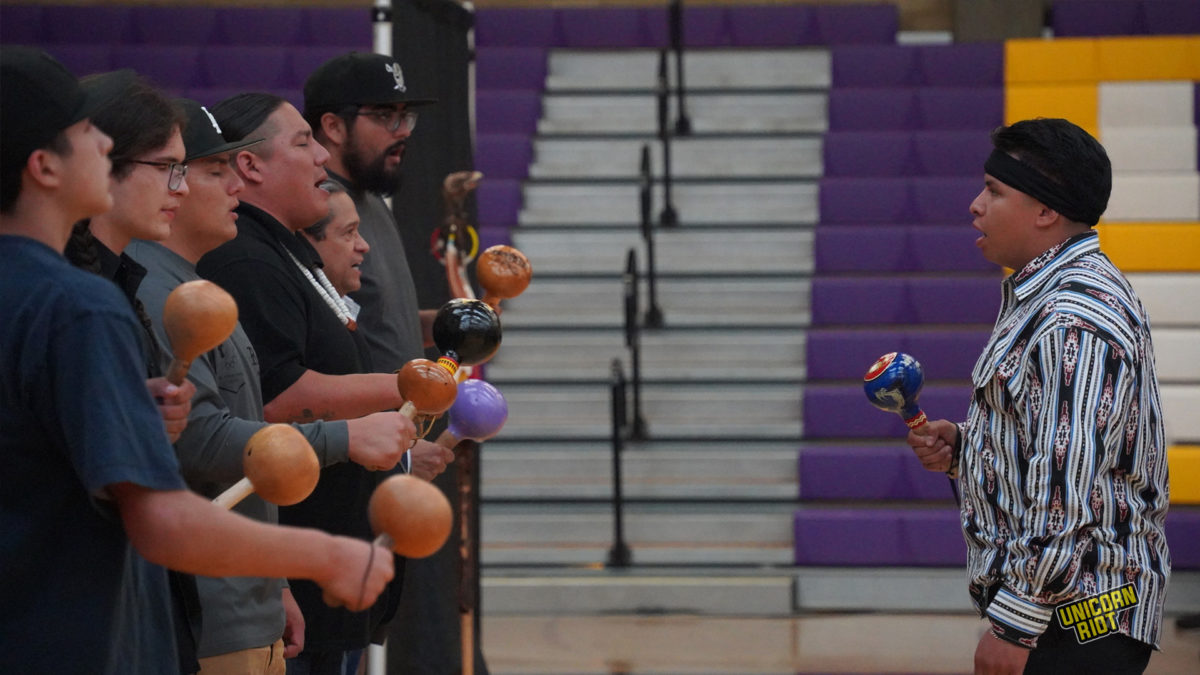
The Relocation Act of 1956 was a United States law intended to create “a program of vocational training” for American Indian living on Indian Reservations in the United States. It placed many families in large cities in the United States such as New York City, Los Angeles, Phoenix, Chicago, Minneapolis, Denver, Seattle, and more. Today, those cities have the largest populations of American Indian/Native American people in the country. Today, according to the U.S. Census Bureau, 7 out of 10 American Indians and Alaskan Natives live in or near cities.
The Relocation Act aimed to assimilate American Indian and Alaskan Native families into mainstream society by encouraging families to leave Indian reservations. The Act was passed during the Termination policy era, where six laws aimed to terminate Indian tribes that had treaties with the federal government. By termination, tribes also gave up trust lands. More than 100 tribes were terminated during this era, and over a million acres of land were removed from trust status. While most tribes regained federal recognition, 9 California based tribes didn’t and remained terminated as of today.
Efforts to assimilate Indigenous people isn’t new to the 1900’s though. Europeans and their American descendants have believed that Indigenous people should abandon their traditional lives and become “civilized” for centuries and is often the basis in federal Indian laws.
The initial Federal Indian Boarding School Initiative Investigative Report in May 2022 (pdf), shows that between 1819 and 1969, the United States operated or supported 408 boarding schools across 37 states (or then-territories), including 21 schools in Alaska and 7 schools in Hawaii. The report also cited that the Federal Indian Boarding School system was part of a broader objective to dispossess Indian Tribes, Alaska Native Villages, and the Native Hawaiian Community of their territories to support the expansion of the United States.
The Federal Indian boarding school system deployed systematic militarized and identity-alteration methodologies to attempt to assimilate American Indian, Alaska Native, and Native Hawaiian children through education, including but not limited to the following: (1) renaming Indian children from Indian to English names; (2) cutting hair of Indian children; (3) discouraging or preventing the use of American Indian, Alaska Native, and Native Hawaiian languages, religions, and cultural practices; and (4) organizing Indian and Native Hawaiian children into units to perform military drills.
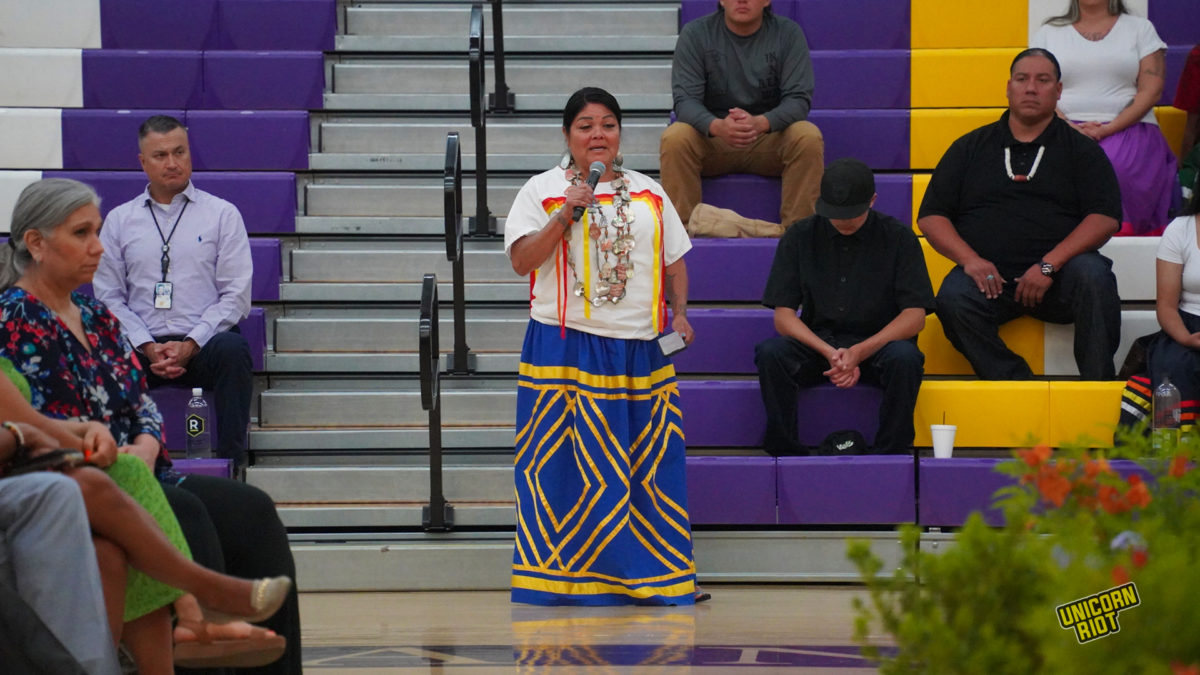
Secretary of the Interior, Deb Haaland, announced the Federal Indian Boarding School Initiative, directing the Department of the Interior by Secretarial Memorandum, is set to undertake an investigation of the loss of human life and lasting consequences of the Federal Indian boarding school system.
The Department has also started to identify locations of marked and unmarked burial sites of remains of American Indian, Alaska Native, and Native Hawaiian children at or near school facilities. The Department’s investigation has already identified marked or unmarked burial sites at approximately 53 different schools across the Federal Indian boarding school system.
“Our next steps include identifying marked and unmarked burial sites across the boarding school system and determining the total amount of federal funding and support invested in this system,” said Assistant Secretary of Interior Bryan Newland at Sherman Indian High School on August 4, 2023.
Another listening session is scheduled on October 1, 2023 in Albuquerque, New Mexico.
About the author: Darren Thompson has reported on political unrest, tribal sovereignty, and Indigenous issues for the Aboriginal Peoples Television Network, Indian Country Today, Native News Online, Powwows.com and Unicorn Riot. He has a bachelor’s degree in Criminology & Law Studies from Marquette University in Milwaukee, Wisconsin
‘Road to Healing’ Coverage by Unicorn Riot
Historic Investigation of U.S. Boarding Schools for Native Children Ends With Scathing Report – Nov. 25, 2024
US Department of Interior Hosts California Listening Sessions on Federal Indian Boarding Schools – Sept. 15, 2023
US Dept. of Interior Continues Boarding School Listening Sessions, Visits Minnesota – June 3, 2023
U.S. Department of Interior Halfway through “Road to Healing” Tour – Feb. 3, 2023
Follow us on X (aka Twitter), Facebook, YouTube, Vimeo, Instagram, Mastodon, Threads, BlueSky and Patreon.
Please consider a tax-deductible donation to help sustain our horizontally-organized, non-profit media organization:

